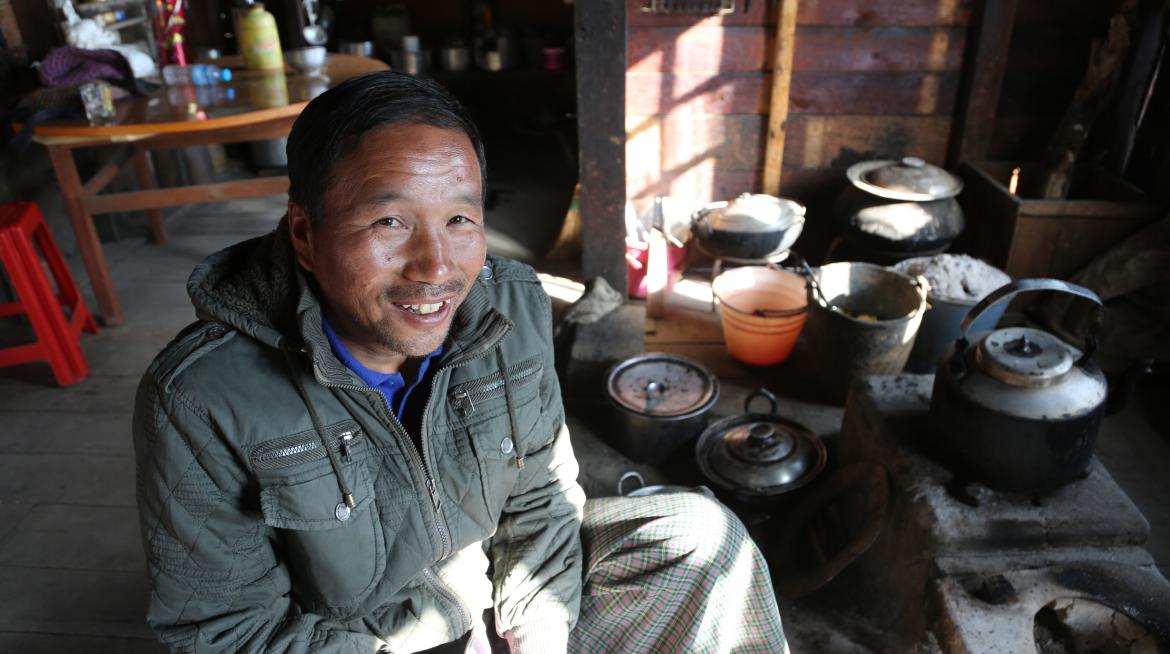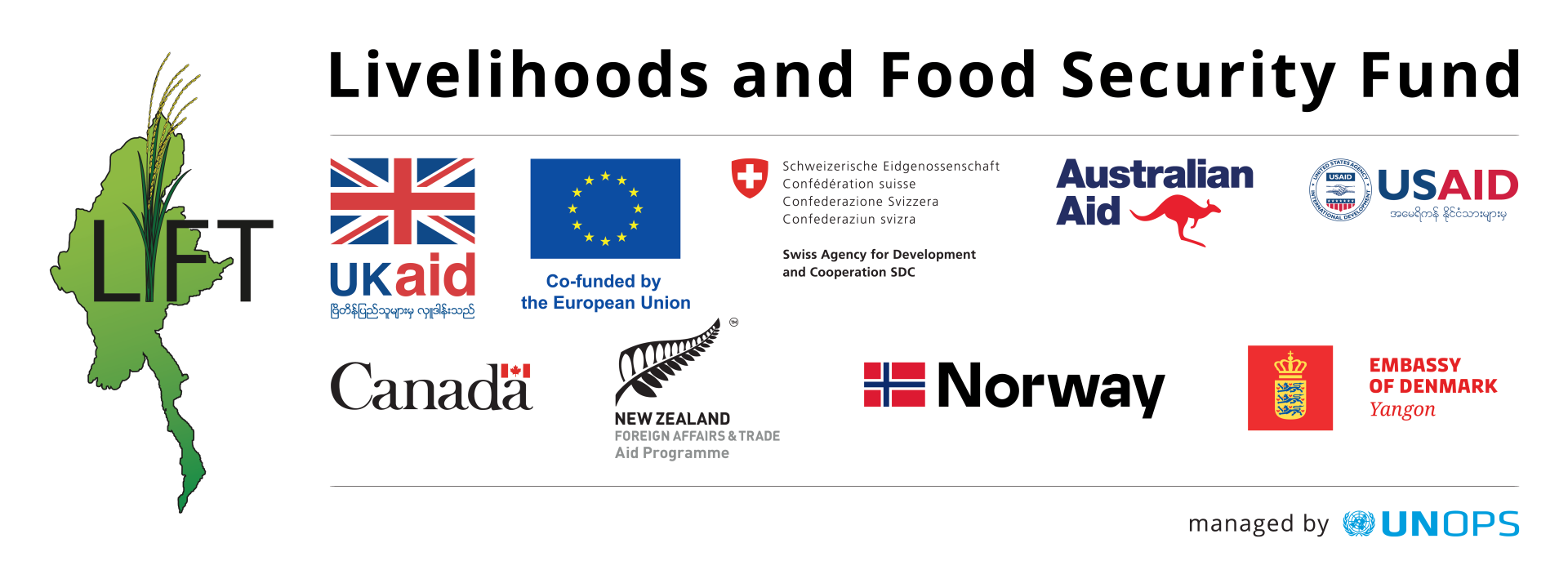
When you peer over the edge of the vertiginous road in the village of So Zang in Chin State, you can see a lattice of blue pipes in the valley below which direct spring waters to the village of Phunom, a few miles away. This is the village lifeline, providing running water to some 140 agricultural households. But in late July last year, after extreme rainfall and a freak wind-storm, a landslide destroyed the pipes, and that lifeline was cut.
Not only had the villagers lost their water supply; most of them also lost their harvests. “I lost 80 per cent of my apple crop – many of them blew away and I couldn’t get the rest to market since the roads were blocked,” says Khup Za Tuang, the village committee book keeper at Phunom.
 The villagers held an emergency meeting, and appealed for help from CORAD, the LIFT-funded local partner of GRET, which had helped them to set up their remarkable irrigation system the year before. In a moment of luck and good timing, CORAD had just been contacted by LIFT with the news that donors has allocated new funds after the floods, and that CORAD had the green light to commence work under a new four-month livelihoods recovery project.
The villagers held an emergency meeting, and appealed for help from CORAD, the LIFT-funded local partner of GRET, which had helped them to set up their remarkable irrigation system the year before. In a moment of luck and good timing, CORAD had just been contacted by LIFT with the news that donors has allocated new funds after the floods, and that CORAD had the green light to commence work under a new four-month livelihoods recovery project.
The community – both men and women - formed into groups to connect new pipe, supplied by CORAD, and were paid a daily cash-for-work rate of 5000 kyats to labour through the landslide’s deep mud and monsoon rain to link the new pipes to the village. The income from this arduous work provided them with cash to buy staples to keep their families fed at that lean time.
LIFT has funded GRET/CORAD’s work in Chin State since 2010, providing farmers with new knowledge to improve their productivity. Early on, farmer groups were formed in the 105 project villages and friendships and trust grew between the farmers and project team.
“We couldn’t have achieved what we did with the flood recovery programme without the farmer groups and village committees,” says Kil Tual, the CORAD programme manager. In the Chin hills, villages are remote and trying to reach them after the floods was particularly difficult with blocked roads, rain and thick mud. In some of the 55 flood affected villages, the team - who get around by motorbike - had to resort to the farmer groups to gather data, define priorities and rally the community.
”After the storm all of my crops were gone,” says Naw Zuap Sinn Huai, as she weeds her garlic plot. “My husband and I were desperate - we didn’t know how we could carry on. CORAD arrived fairly quickly and took data from us all – who had lost what, and so on. Then they supported all of us by giving us seeds for a winter crop – we chose hpa kant pea, garden pea, and this,” she nods to the plot, “to make up for the summer losses.”
Six months after the floods, life in Phunom is back to normal. Tube pipes gurgle and hum as they feed water to different houses and their market gardens, and the village is green with cash crops. Coffee ripens on thick bushes and water sprinklers feed rows of garlic plants.
Naw Zuap Sinn Huai explains that in the Chin language, the village name means the 'Lucky Place'. “We have been very lucky - first to have the irrigation system, and then with the swift help to reinstate it after the floods,” she says. “We also didn’t have to borrow money and get into debt to buy seeds. I’m so grateful for that. We thank everyone who has helped us, sincerely.”
Under the LIFT-funded flood livehoods recovery project, Supporting the Food and Asset Recovery of Disaster -Affected Families in northern Chin State, CORAD assisted 55 flood and landslide affected villages, providing much-needed support.
The powerpoint of project results is here


